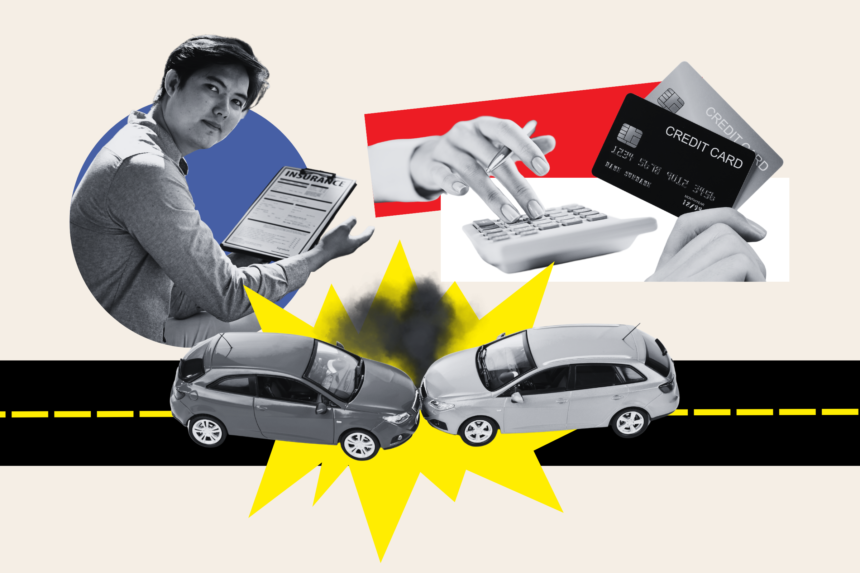Drivers across the U.S. are struggling with the growing cost of car insurance, which rose 2.6 percent in March from February and 22.2 percent from a year earlier, according to the latest data on inflation shared by the Labor Department.
In the same month, consumer prices climbed 0.4 percent compared to February, with inflation rising by a stronger-than-expected 3.5 percent. Shannon Martin, a licensed insurance agent and Bankrate analyst, told Newsweek that skyrocketing car insurance premiums might have something to do with rising inflation.
“Car insurance inflation is sticky, which can create a ‘chicken-and-egg’ scenario,” where the rising cost of living is bringing up the cost of coverage for vehicles and car insurance is, in turn, fanning the flames of inflation, Martin said.
“Insurance pays for medical costs, vehicle parts, labor and legal fees, all things that are impacted by inflation,” Martin said. “But then these expenses drive car insurance premiums up, adding more stress to an already precarious financial situation.”

Photo-illustration by Newsweek/Getty
The cost of car insurance has surged by more than 50 percent since the beginning of 2021, before inflation started the vertiginous climb that led to the peaks reached in summer 2022. In the last year alone, according to a recent study by Bankrate, it shot up by 26 percent, with U.S. car owners now paying a national average annual premium of $2,543 for full coverage. That’s the equivalent of 3.4 percent of their income.
The highest premiums in the country are being paid by drivers in Florida, where car insurance premiums have skyrocketed to nearly $4,000 per year.
But why has the cost of car insurance grown so much?
“The cost of auto claims has soared since the pandemic began in 2020,” Mark Friedlander, director of the Insurance Information Institute ( Triple-I), told Newsweek. “More accidents, higher repair costs, escalating vehicle thefts, rising medical bills, more litigated claims and a high volume of storm losses are the primary cost drivers.”
Between 2019 and 2022, “inflation and supply chain disruptions contributed to a 46 percent cumulative increase in replacement cost,” Friedlander said, “coupled with auto body repair labor rate spikes due to workforce shortages.”
Between January 2023 and January 2024, hospital service costs for car accident victims rose by 6.7 percent, according to data reported by Triple I.
Car thefts have also increased in recent years.
“More than one million vehicles were stolen across the U.S. in 2023, topping one million thefts for the second consecutive year,” Friedlander said. “Prior to 2022, vehicle thefts had not topped one million since 2008. The high volume of Kia and Hyundai models being stolen due to not being equipped with an engine immobilizer is a big reason why we are seeing the spike.”
In 2023, U.S. auto insurers cumulatively paid out an estimated $1.09 in claims and expenses for every $1 of premium written, Friedlander said, “the second consecutive year of a significant insurance industry underwriting loss.”
Insurance companies are taking notice of the changes in the market.
“Car insurance is a reactionary product, and carriers are attempting to recoup the losses they have experienced over the past few years while adjusting their risk models to accommodate future risks,” Martin explained. “Some of these losses include costly extreme weather claims, high repair costs due to inflation and supply issues and high vehicle theft rates during the pandemic.”
The rising cost of car insurance is having a frustrating impact on policyholders.
“You have to have car insurance in most states, and with rates rising with almost every carrier, drivers may be reducing coverage and increasing deductibles beyond what they should just to keep their cars legally insured,” Martin said. “If you find yourself in a difficult financial position because of your insurance costs, speak to your agent before making significant policy changes.”
Texas resident Melinda Ray told Newsweek that the increase in the cost of car insurance in the state has been “outrageous.” Her family owns four insured vehicles—a 2020 GMC Sierra, a 2021 Buick Encore GX, a 2021 Buick Envision, and a 2015 Infiniti QX60.
“While we do have two daughters—both 18 or older—on our policy, our insurance is currently $14,290 per year,” she said. “If we were allowed to pay it in monthly installments—which we are not—that would be $1,200 per month. If we paid our mortgage payment and an insurance payment each month, that would take almost an entire paycheck with little left over for essentials such as food and gas for these vehicles.”
While Ray considers herself and her family to be “extremely fortunate to have a newer house and newer vehicles,” she said she has no idea how people can afford the “out-of-control rise in home and vehicle insurance, rising rent or home mortgages, increased grocery costs, and higher utilities.”
Unfortunately, the situation is unlikely to change any time soon. When asked if the cost of car insurance will continue growing in the coming months, Martin anticipated that “we will see increases throughout the year.”
The cost of vehicle parts and labor has remained above pre-pandemic levels and the likelihood of extreme weather claims is still on the rise, Martin explained. Extreme weather events are expected to become more frequent and severe due to climate change, something which is driving up the cost of homeowner insurance in several states, especially those as vulnerable as California and Florida. More than 100,000 vehicles were destroyed by Hurricane Ian in 2022, according to Friedlander.
“Some insurance companies are filing for additional rate increases, and since these increases only impact policyholders at renewal, I anticipate that we will see increases throughout the year,” Martin said. “However, if we can avoid a catastrophic hurricane and wildfire season this year, we may see rates start to stabilize in 2025.”
Uncommon Knowledge
Newsweek is committed to challenging conventional wisdom and finding connections in the search for common ground.
Newsweek is committed to challenging conventional wisdom and finding connections in the search for common ground.

